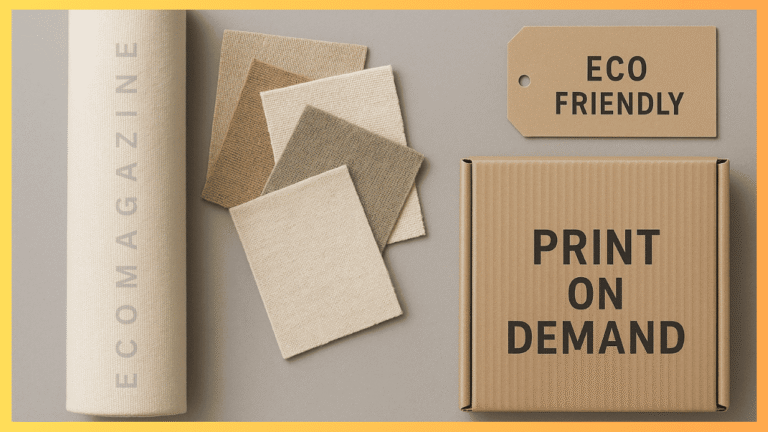As the digital marketplace expands, setting up an eco-friendly print on demand business can significantly reduce your ecological footprint. Partnering with green suppliers like Inkthreadable not only benefits the environment but also enhances your brand reputation.
I Making sustainability a core part of your print-on-demand business is now essential rather than optional. The increasing awareness of environmental issues among consumers means that your business must adapt to remain competitive. As an online entrepreneur, you have the power to influence your supply chain’s impact on the planet. By choosing green suppliers, you can ensure that your products are produced responsibly and ethically. This approach not only appeals to eco-conscious consumers but also sets a standard in the industry, promoting overall sustainability. Additionally, utilising print on demand services can further enhance your eco-friendly efforts by reducing waste and overproduction.
The benefits of using Inkthreadable for eco-friendly print on demand
Partnering with Inkthreadable, an environmentally responsible supplier, can lead to several advantages for your business. First, it helps minimise your environmental impact by ensuring that raw materials are sourced sustainably. Inkthreadable uses renewable resources and reduces waste in their production processes. Additionally, working with such suppliers can improve your brand’s image, as consumers increasingly prioritise ethical consumption. They are more likely to support businesses that align with their values, which can result in increased customer loyalty and satisfaction.
A major advantage is its ability to remain budget-friendly over time. While eco-friendly materials might initially be more expensive, they often prove to be more durable and efficient over time. Moreover, many sustainable practices lead to reduced operational costs, such as energy savings through efficient manufacturing processes or reduced waste disposal expenses. By embracing these practices, your business can achieve both financial and environmental goals simultaneously.
Moreover, aligning with Inkthreadable can open up new market opportunities. As the demand for sustainable products continues to rise, having a well-established eco-friendly supply chain can position your business as a leader in this growing market segment. Adopting this approach strengthens your market position while also aligning your company with upcoming sustainability-driven regulations.
Steps to source ethical materials and select green vendors
To successfully incorporate sustainability into your print on demand operations, begin by thoroughly researching potential suppliers. Look for those who adhere to recognised environmental standards and certifications, such as ISO 14001 or Fair Trade certification. Such certifications showcase dedication to eco-friendly operations and responsible production standards. Additionally, consider visiting supplier facilities or requesting detailed reports on their environmental policies to ensure transparency and accountability.
Engage in direct communication with suppliers to understand their sustainability initiatives better. Ask about their supply chain management practices and how they address environmental concerns like carbon emissions and waste reduction. A supplier willing to discuss these topics openly is likely committed to genuine sustainable efforts.
Finally, consider diversifying your supplier base by including local vendors whenever possible. Local sourcing reduces transportation emissions and supports community economies while providing faster turnaround times for product delivery. By incorporating these strategies into your selection process, you’ll build a robust network of green vendors aligned with your business’s sustainability goals.
Building a responsible supply chain with Inkthreadable
A responsible supply chain begins with clear objectives and policies centered around sustainability. Define what sustainability means for your business and communicate these expectations to all stakeholders involved in production and logistics processes. Regularly review supplier performance against set criteria to ensure ongoing compliance with environmental goals.
Implement technology solutions like blockchain or traceability software that provide real-time data on product origins and environmental impact throughout the supply chain journey. These tools enhance transparency while allowing you to track progress toward sustainability targets effectively.
Create partnerships beyond traditional supplier relationships by collaborating with organisations focused on sustainable development initiatives within your industry sector or community at large. By fostering these alliances alongside existing vendor connections, you’ll contribute positively toward broader societal efforts aimed at achieving ecological balance.


